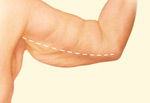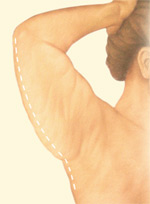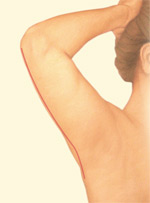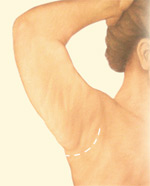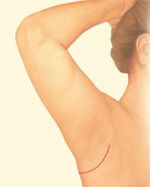BRACHIOPLASTY
A DISTINCTIVELY DIFFERENT PRACTICE
EXPERIENCE EXTRAORDINARY
What is an Arm Lift?
Fluctuations in weight, growing older, and heredity can cause your upper arms to have a drooping, sagging appearance. This is a condition that cannot be corrected through exercise. If the underside of your upper arms are sagging or appear loose and full due to excess skin and fat, an arm lift may be indicated.
An arm lift, more formally known as brachioplasty, is a surgical procedure that is meant to balance the upper arm with the forearm. The upper arm is contoured by removing excess sagging skin and fat from the underarm to the elbow. By reducing skin and fat, the shape of the upper arm improves, as does the transition from the upper arm to the forearm.
The drooping, sagging appearance of the upper arm can be caused by excess skin, excess fat, or a combination of excess skin and fat. The ideal candidates for an arm lift are adults whose primary problem is significant upper arm skin laxity. Weight should be relatively stable and the individual should not be significantly overweight.
What is an Arm Lift?
Fluctuations in weight, growing older, and heredity can cause your upper arms to have a drooping, sagging appearance. This is a condition that cannot be corrected through exercise. If the underside of your upper arms are sagging or appear loose and full due to excess skin and fat, an arm lift may be indicated.
An arm lift, more formally known as brachioplasty, is a surgical procedure that is meant to balance the upper arm with the forearm. The upper arm is contoured by removing excess sagging skin and fat from the underarm to the elbow. By reducing skin and fat, the shape of the upper arm improves, as does the transition from the upper arm to the forearm.
The drooping, sagging appearance of the upper arm can be caused by excess skin, excess fat, or a combination of excess skin and fat. The ideal candidates for an arm lift are adults whose primary problem is significant upper arm skin laxity. Weight should be relatively stable and the individual should not be significantly overweight.
FAQ’s





